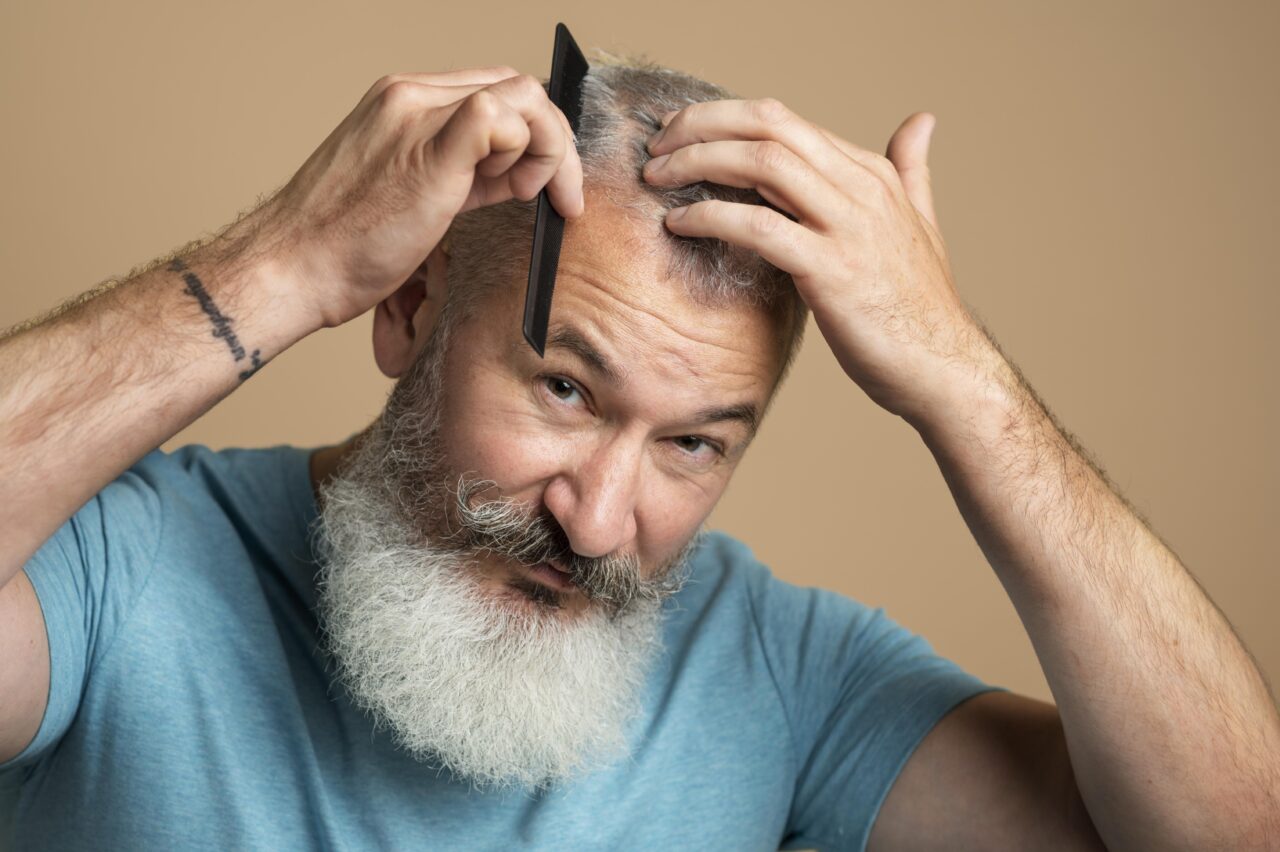Hair transplants for women in Mauritius involve the surgical procedure of moving hair follicles from one part of the scalp to another to treat hair loss or thinning. This procedure is typically recommended for women who have experienced significant hair loss due to genetics, hormonal changes, or other factors. It can help restore confidence and improve overall appearance for those seeking a long-term solution to hair loss. In this article, we will explore the different techniques used in hair transplant procedures for women in Mauritius and discuss the potential risks and benefits associated with this treatment option.
Understanding Hair Loss in Women
Hair loss is a common concern that affects many women at various stages of life. While some degree of hair shedding is normal, excessive or patterned hair loss can have a significant impact on a woman’s self-esteem and overall well-being.
There are numerous factors that contribute to hair loss in women, including genetics, hormonal imbalances, medical conditions, stress, and certain hairstyles or treatments. Androgenetic alopecia, also known as female pattern baldness, is one of the most common types of hair loss in women. It is characterised by a gradual thinning of hair, primarily affecting the crown and frontal areas of the scalp.
Other causes of hair loss in women include pregnancy, menopause, thyroid disorders, autoimmune diseases, nutritional deficiencies, and certain medications. Regardless of the underlying cause, hair loss can be emotionally and psychologically challenging, often leading to decreased confidence and self-esteem.
For women in Mauritius seeking a long-term solution to combat hair loss, hair transplantation has emerged as a viable and effective option. This surgical procedure involves moving hair follicles from one part of the scalp to another, helping to restore a fuller, more natural-looking head of hair.
Centre de Chirurgie Esthétique de L’Océan Indien Hair Transplant FUE Density® Technique

The FUE technique is a more recent and minimally invasive method of hair transplantation. In this procedure, individual follicular units are extracted one by one from the back or sides of the scalp using a specialised punch tool. These grafts are then transplanted into the desired areas.
The FUE method is known for leaving minimal scarring, as it does not involve the removal of a strip of skin. It also allows for more precise graft placement and can be used to treat smaller areas of hair loss. However, the process is more time-consuming and may require multiple sessions for extensive hair restoration.
At the Centre de Chirurgie Esthétique de L’Océan Indien , their experienced surgeons use the latest techniques and technology to ensure natural-looking results for our patients. They offer personalised consultations to determine the best approach for each individual’s unique needs and goals.
Who is eligible for hair transplants?
Not all women experiencing hair loss are suitable candidates for hair transplantation. The ideal candidate should have a healthy supply of donor hair at the back and sides of the scalp, as well as realistic expectations regarding the outcome of the procedure.
Causes of Hair Loss in Women
Hair transplants are typically recommended for women suffering from the following types of hair loss:
- Androgenetic alopecia (female pattern baldness)
- Traction alopecia (hair loss caused by tight hairstyles or extensions)
- Scarring alopecia (hair loss resulting from trauma or inflammatory conditions)
- Post-pregnancy or post-menopausal hair loss
However, women with diffuse hair loss or hair loss caused by certain medical conditions may not be suitable candidates for hair transplantation.
Hair Transplant Preparation and Procedure
Pre-operative Instructions
In preparation for a hair transplant procedure, patients will receive specific instructions from their surgeon. These may include avoiding certain medications or supplements that can increase bleeding risk, refraining from smoking or consuming alcohol, and scheduling time off work or other activities for the recovery period.
The Hair Transplant Procedure (Step-by-Step)
The hair transplant procedure is typically performed under local anaesthesia, and the duration can range from several hours to a full day, depending on the extent of the treatment area and the technique used. In the FUE method, the surgeon uses a specialised punch tool to extract individual follicular units one by one from the donor area. Once the grafts have been harvested, the surgeon will create small recipient sites in the areas of the scalp affected by hair loss. These grafts are then carefully implanted into the recipient sites, ensuring proper angulation and orientation for natural-looking results.
Post-operative Care and Recovery
After the hair transplant procedure, patients can expect some swelling, bruising, and discomfort in the treated areas. Pain medication and antibiotics may be prescribed to manage any discomfort and prevent infection.
Patients will be advised to avoid strenuous activities, excessive sun exposure, and certain hairstyles or styling products during the initial recovery period. Regular follow-up appointments will be scheduled to monitor the healing process and provide guidance on hair care and maintenance.
It’s important to note that the transplanted hair will typically shed within a few weeks after the procedure, but new growth should become visible within 3 to 4 months. The full results of the hair transplant may not be evident until 9 to 12 months after the procedure.
Risks and Potential Complications
Like any surgical procedure, hair transplantation carries some risks and potential complications. However, these risks are generally minimal when the procedure is performed by an experienced and qualified surgeon.
Scarring
The FUE technique can result in some degree of scarring, with small, dot-like scars that may be present at the extraction sites. These scars are typically very small and easily concealed by the surrounding hair. It is important to follow post-operative care instructions to minimise the risk of scarring and ensure proper healing. Overall, scarring from FUE hair transplantation is usually minimal and not a major concern for most patients.
Infection
Proper surgical techniques and post-operative care can help minimise the risk of infection. However, if an infection does occur, it may require antibiotic treatment or, in severe cases, additional surgical intervention.
Bleeding or Swelling
Some bleeding and swelling are common after a hair transplant procedure. However, excessive bleeding or prolonged swelling may indicate a complication and should be addressed promptly by the surgeon.
Unnatural-looking Results
In the hands of a skilled and experienced surgeon, hair transplants can achieve natural-looking results. However, improper graft placement or angulation can lead to an unnatural appearance, such as hair growing in the wrong direction or an uneven hairline.
Expected Timelines for Hair Growth
After a hair transplant procedure, patients can expect to see the following timeline for hair growth:
- 2-4 weeks: Transplanted hair will shed, a process known as “shock loss.”
- 3-4 months: New hair growth should become visible.
- 6-9 months: Significant new growth and improvement in hair density.
- 9-12 months: Final results of the hair transplant should be evident.
It’s important to note that individual results may vary, and some patients may require additional sessions to achieve their desired outcome.
Maintaining Transplanted Hair
To ensure the longevity of transplanted hair, patients will need to follow a proper hair care routine and make lifestyle adjustments. This may include using gentle, sulphate-free shampoos and conditioners, avoiding excessive heat or chemical treatments, and maintaining a healthy diet and lifestyle.
Regular follow-up appointments with the hair restoration surgeon may also be recommended to monitor the progress and address any concerns or issues that may arise.
Long-term Outlook
For many women, hair transplantation can provide a long-lasting solution to hair loss. With proper maintenance and care, the transplanted hair can continue to grow and blend seamlessly with the existing hair, providing a natural and rejuvenated appearance.
However, it’s important to note that hair transplants do not prevent future hair loss. If the underlying cause of hair loss persists, such as genetic factors or hormonal imbalances, additional hair thinning or shedding may occur in non-transplanted areas over time.
Hair Transplant Cost and Considerations in Mauritius
The cost of a hair transplant procedure for women in Mauritius can vary depending on several factors. The most objective way to compare costs and obtain an accurate estimate is to consider the price per follicular unit. A follicular unit typically contains 1 to 4 hairs, with an average of 2.2 hairs per follicular unit. Alternatively, some practitioners may quote costs based on the number of individual hairs transplanted.
To receive a more precise cost estimate, it is recommended to provide three photographs (front, back, and top views of the head) to the clinic or surgeon. This allows them to assess the degree of hair loss and determine the approximate number of follicular units, or hairs, that need to be transplanted for a satisfactory result.
Staffing and Expertise
For larger hair transplant sessions involving more than 1,000 follicular unit grafts, a team consisting of one surgeon, one anesthesiologist, and 4 to 5 nurses is typically required to ensure optimal results and efficiency throughout the procedure.
Centre Esthétique de l’Océan Indien: Boost Your Confidence with a Hair Transplant
For women in Mauritius grappling with hair loss, the transformative potential of hair transplantation at Centre Esthétique de l’Océan Indien offers a beacon of hope. Through advanced surgical techniques and personalised care, individuals can embark on a journey toward renewed confidence and natural beauty. By addressing the underlying causes of hair loss with precision and compassion, the clinic strives to empower women to reclaim their sense of identity and vitality, fostering a path toward enhanced well-being and self-assurance.


